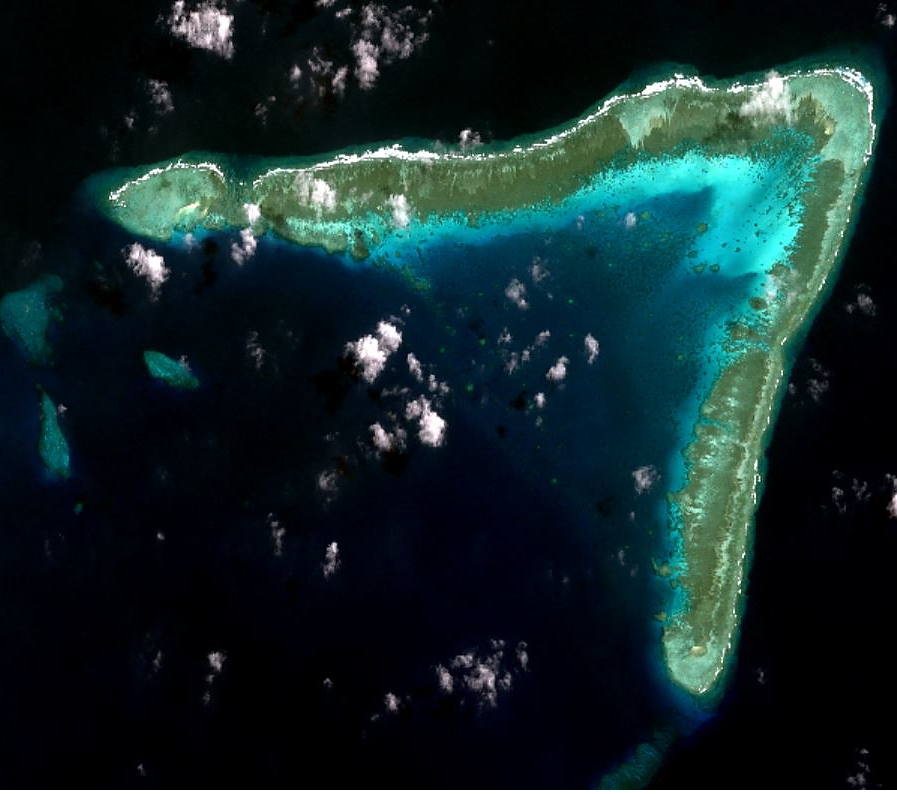The Whitsun Reef Incident and the Law of the Sea
How should observers make sense of the various accounts of an incident in the South China Sea?

Published by The Lawfare Institute
in Cooperation With

In March the Philippines formally protested the presence of about 200 Chinese boats moored near its claimed Whitsun Reef in the South China Sea. Philippines Secretary of Defense Delfin Lorenzana publicly called “on the Chinese to stop this incursion and immediately recall these boats violating our maritime rights and encroaching into our sovereign territory.” An international chorus of concern and clarion calls for action soon followed, with leading analysts joining in. China said the vessels were fishing boats sheltering from the weather, that China had traditionally fished around the reef, and that their presence was “normal and legitimate[.]” Critics alleged nevertheless that the vessels were crewed by maritime militia and that the boats’ intention was to demonstrate China’s illegal historical claim to the waters.
On March 31, in response to the developments, U.S. National Security Adviser Jake Sullivan told Philippines National Security Adviser Hermogenes Esperon that “the United States stands with our Philippine ally in upholding the rules-based international maritime order.”
But the story soon changed. Assertions that the Chinese vessels were probably “all maritime militia” quickly transitioned to “maybe 84” and then “definitely 7[.]” Most of the vessels dispersed to other reefs, and the calls for immediate action abated. Indeed, this incident turned out to be another tempest in a teapot. But it did raise questions of China’s compliance with “the international maritime order”—the U.N. Convention on the Law of the Sea (UNCLOS).
Given the conflicting claims in the area, the massing of such boats may be perceived by the Philippines as a threat of use of force—a violation of the U.N. Charter. But this is quite a stretch and, in any case, remains to be proved. Moreover, the boats’ presence may be in compliance with UNCLOS because they may be within China’s claimed territorial sea around claimed high-tide features. This offers an alternative legal explanation to the assumption that the boats’ presence was based on China’s discredited claims to historical rights, sovereignty or other jurisdiction in maritime areas of the South China Sea.
Why might the boats be within China’s claimed waters? China also claims the Julian Felipe Reef, calling it Niue Jiao. Some sources say there are sand bars on the reef that remain above water at high tide. If so, they can be claimed as Chinese territory and are entitled to a 12 nautical mile territorial sea. Again, if so, and the vessels are moored within 12 nautical miles of them, then they are in a territorial sea around a disputed legal rock claimed by China, the Philippines and Vietnam. Whitsun Reef is also within 12 nautical miles of Grierson Reef —a legal rock occupied by Vietnam but also claimed by China.
Moreover, the boats were not fishing, so they were not violating any country’s fishing laws. A Philippines task force statement said, “They may be doing illicit activities at night and lingering presence may cause irreparable damage to the environment[.]” But this was only speculation. The task force also alleged that the boats were a “hazard to navigation and safety of life[,]” although no specific evidence was provided. Basically the critics were throwing the kitchen sink at China.
If the Chinese vessels were fishing in the Philippines’s exclusive economic zone (EEZ) outside of 12 nautical miles from rocks that both claim, then the boats should indeed have ceased and desisted. But the moored boats were not fishing, and as long as they refrained from damaging the environment and stayed in their own claimed territorial waters, they may have been within the law.
Even if the vessels were adjudged to be moored in another country’s territorial sea, according to Article 18(2), vessels of any type are allowed to anchor in a foreign territorial sea if “rendered necessary by force majeure or distress[.]” This justification may well be applicable. In December and January, the northeast monsoon is at full strength in the South China Sea and is accompanied by strong winds and turbulent seas. It usually moderates in March. The vessels were moored in the lee of the reef, offering some protection from the northeast monsoon. The Philippines ambassador to China, Chito Sta Romana, wisely suggested that observers should watch and see if the vessels stayed in the area when the weather improved. As if on cue, the weather moderated and by April 1 the number of Chinese vessels at Whitsun Reef had dropped to 44, and by April 14 it had dropped to nine. Whether that was due to the meteorological or political weather—or both—remains to be determined.
Since most of the boats have moved away as demanded, some critics have complained that the vessels are “now scattered in an even wider area within the Philippines [EEZ].” But while moving between their claimed territorial seas, the Chinese vessels do have the right of freedom of navigation in the Philippines EEZ. A Philippines military task force set up to monitor the situation said the vessels were “swarming” other reefs, including 94 at Johnson South Reef and 84 at Gaven Reef, as well as some at Fiery Cross Reef and Subi Reef. There were also four Chinese naval vessels reported at Mischief Reef, although this has been an ongoing Philippines complaint.
Gaven Reef (North) and Fiery Cross Reef are legal rocks occupied by China. Johnson South Reef and Subi Reef are low-tide elevations. But they are within 12 nautical miles of legal rocks claimed by China—Johnson North Reef, which is occupied by Vietnam, and Sandy Cay. Thus, the dispersed Chinese vessels may be operating or anchored within the territorial sea of legal rocks claimed by China. Although Mischief Reef is claimed and occupied by China, it was originally a low-tide elevation on the Philippines continental shelf and cannot be claimed as territory by any country.
Perhaps the real Philippines complaint is that the vessels are violating its territorial waters—not its EEZ. Armed Forces Chief-of-Staff Lt. Gen. Cirilito Sobejana said, “We do not tolerate incursions in our territorial waters from anybody.”
Given this context, it appears that the issue is really a series of disputes over “who owns rocks within 12 [nautical miles] of where the vessels are and what the vessels are doing[.]” Yet Philippines Foreign Minister Teodoro Locsin insists that the features fall within the Philippines EEZ and that they are therefore “ours.” But UNCLOS does not prohibit a situation in which one country owns a rock in another’s EEZ. Moreover the Philippines has not officially declared the extent of its EEZ, further muddying the waters.
The situation became more fraught on March 30 when a Philippines military plane with local journalists aboard flew over the area and was warned by the Chinese military to “stay away” and “leave immediately[.]” That sounds belligerent. But it is normal practice between the two militaries to state their legal position in such situations. The Chinese warning could also be justified if the aircraft, as reported, flew without permission over or within 12 nautical miles of a China-claimed and -occupied legal rock entitled to a 12 nautical mile territorial sea.
The Philippines military has also said it has documented illegal artificial structures on Union Banks. Whichever country allowed their construction has violated the Association of Southeast Asian Nations (ASEAN) 2012 Declaration of Conduct of the Parties in the South China Sea in which the parties undertake “to exercise self-restraint in the conduct of activities that would complicate or escalate disputes and affect peace and stability including, among others, refraining from action of inhabiting on the presently uninhabited islands, reefs, shoals, cays, and other features[.]”
But a subsequent statement seemed to withdraw this allegation. Moreover, the same arbitration decision that declared China’s historical claim invalid also held that the Declaration of Conduct is not a legally binding document. It seems that state practice in the South China Sea has been to build whatever the state wants on claimed territory. But there are limits: According to the arbitration decision, the construction should protect and preserve the environment.
China’s maritime militia is real and can easily be perceived to be intimidating. Moreover, China has certainly been aggressively promoting and defending its claims in the South China Sea.
And unfortunately, there are many claims and actions in the South China Sea that are probably not in compliance with UNCLOS. But China may have some UNCLOS-compatible basis for its position in this incident.





